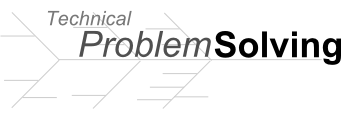My earlier post about multi-tasking cites evidence that multi-tasking is a misnomer and yet these phone conferences are a invitation to do so. One ear on the phone, sending an e-mail and perhaps even in IM or working on a document is probably pretty standard behavior for participants in a phone conference. Frequently someone is asked a question and their response is "Pardon, please repeat the question." Their attention was elsewhere.
In the chapter 9 of his book Brain Rules, John Medina reviews studies which show that optimal learning is when multiple senses are involved . In phone conferences, we only have one of our senses involved. When you're in a meeting, you're learning, unless of course you are doing all the talking. You're learning what others know, what you have to work on, what they're working on.
The phone conference is a less than ideal learning situation. I wonder if there are any studies on the efficiency of face-to-face meetings versus phone only and phone and visuals. I wonder where the break-even point is for the travel costs versus the wasted time in the meetings.
Some suggestions for your next phone conference.
- Send an agenda out beforehand so everyone is prepared to learn about the topics.
- Use some sort of desktop sharing program so everyone is seeing the same information.
- Send out minutes along with any visuals after the meeting is over so everyone can review the outcomes. (Another chance to learn what was discussed).
- If you're a participant. Pay attention. It may seem like you're more productive when sending IMs, EMs, but every time you ask for something to be repeated you're wasting x number of other people's time.



